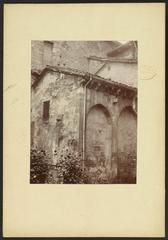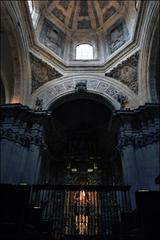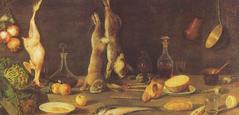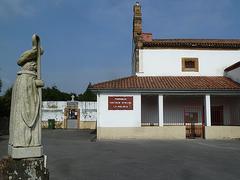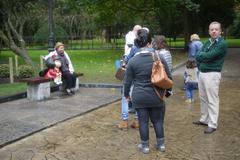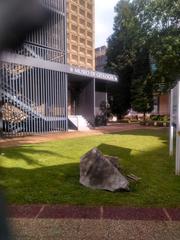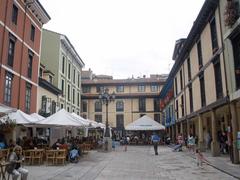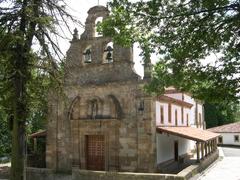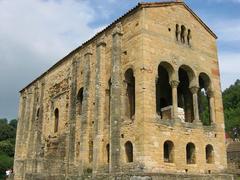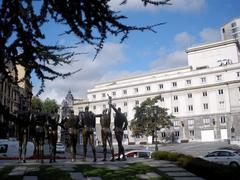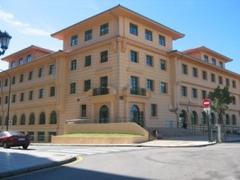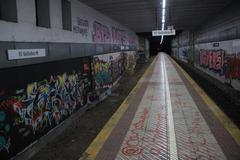Visiting Hours and Tickets for Plaza de la Catedral in Oviedo City
Date: 23/07/2024
Introduction to Plaza de la Catedral
Nestled in the historic heart of Oviedo, Spain, Plaza de la Catedral is a site of immense historical, architectural, and cultural significance. This comprehensive guide aims to provide visitors with a detailed understanding of the plaza, from its rich history and architectural marvels to practical information on visiting hours, tickets, and travel tips. Dominating the plaza is the Gothic Cathedral of San Salvador, a masterpiece dating back to the 13th century and recognized as a UNESCO World Heritage Site (UNESCO). The cathedral houses the Cámara Santa, which contains relics such as the Holy Shroud and the Cross of the Angels, making it a focal point for religious and social activities for centuries (Spain.info). The plaza also serves as a cultural hub, hosting numerous events throughout the year, and is a significant pilgrimage site on the Camino de Santiago (Camino de Santiago). Whether you are a history buff, an architecture enthusiast, or simply looking to immerse yourself in the vibrant culture of Oviedo, this guide offers something for everyone.
Table of Contents
- [Historical Background](#historical-backgroundhistorical-background)
- [Early Beginnings and Medieval Era](#early-beginnings-and-medieval-eraearly-beginnings-and-medieval-era)
- [Romanesque and Gothic Transformations](#romanesque-and-gothic-transformationsromanesque-and-gothic-transformations)
- [Renaissance and Baroque Influences](#renaissance-and-baroque-influencesrenaissance-and-baroque-influences)
- [Modern Era and Preservation Efforts](#modern-era-and-preservation-effortsmodern-era-and-preservation-efforts)
- [Visitor Information](#visitor-informationvisitor-information)
- [Ticket Prices and Opening Hours](#ticket-prices-and-opening-hoursticket-prices-and-opening-hours)
- [Travel Tips](#travel-tipstravel-tips)
- [Nearby Attractions](#nearby-attractionsnearby-attractions)
- [Accessibility](#accessibilityaccessibility)
- [Architectural Highlights](#architectural-highlightsarchitectural-highlights)
- [Cultural Significance](#cultural-significancecultural-significance)
- [FAQ](#faqfaq)
- [Conclusion](#conclusionconclusion)
- [References and Further Reading](#references-and-further-readingreferences-and-further-reading)
Historical Background
Early Beginnings and Medieval Era
The history of Plaza de la Catedral in Oviedo is deeply intertwined with the origins of the city itself. Oviedo was founded in 761 AD by monks Máximo and Fromestano, and it quickly became a significant religious center. The construction of the original church on the site where the Cathedral now stands began in the late 8th century under the reign of King Fruela I. This early church was dedicated to San Salvador and was part of a larger monastic complex.
The importance of Oviedo grew during the reign of Alfonso II (791-842), who made the city his capital. Alfonso II initiated the construction of a more substantial church to replace the original one, which had been destroyed by a fire. This new church was consecrated in 821 and became a key pilgrimage site, especially after the discovery of the remains of Saint James the Apostle in Santiago de Compostela. The route from Oviedo to Santiago became known as the ‘Camino Primitivo,’ the original pilgrimage route to Santiago.
Romanesque and Gothic Transformations
The 11th and 12th centuries saw significant transformations in the architectural landscape of Plaza de la Catedral. The Romanesque style began to influence the design of religious buildings, and the church of San Salvador was no exception. However, it was in the 13th century that the most significant changes occurred. The Romanesque church was largely demolished to make way for a new Gothic cathedral, reflecting the architectural trends sweeping across Europe.
The construction of the Gothic Cathedral of San Salvador began in 1388 under the direction of Bishop Gutierre de Toledo. The project was ambitious, aiming to create a grand structure that would reflect the growing importance of Oviedo as a religious center. The cathedral was built over several centuries, with contributions from various bishops and architects. The main structure was completed in the 16th century, although work continued on various elements, such as the cloister and chapels, well into the 18th century.
Renaissance and Baroque Influences
The Renaissance and Baroque periods brought further changes to Plaza de la Catedral. In the 16th century, the cloister was constructed, showcasing Renaissance architectural elements. The cloister served not only as a place of meditation and prayer for the clergy but also as a burial site for notable figures.
The Baroque period in the 17th and 18th centuries saw the addition of several chapels and altarpieces within the cathedral. One of the most notable additions was the Chapel of the King Casto, built in the 18th century. This chapel houses the remains of several Asturian kings and is a testament to the enduring significance of Oviedo as a royal and religious center.
Modern Era and Preservation Efforts
The 19th and 20th centuries brought challenges and opportunities for the preservation of Plaza de la Catedral. The cathedral and its surrounding buildings suffered damage during the Spanish Civil War (1936-1939), necessitating extensive restoration work. Efforts to preserve and restore the cathedral have continued into the 21st century, with a focus on maintaining its historical and architectural integrity.
In recent years, Plaza de la Catedral has become a focal point for cultural and religious events in Oviedo. The square hosts various festivals, processions, and public gatherings, reflecting its enduring role as a center of community life. The cathedral itself remains a major pilgrimage site, attracting visitors from around the world who come to admire its architectural beauty and historical significance.
Visitor Information
Ticket Prices and Opening Hours
Visitors to Plaza de la Catedral can explore the rich history and stunning architecture of the Cathedral of San Salvador. The cathedral is open to the public year-round, with varying visiting hours depending on the season. It is advisable to check the official website or contact the cathedral directly for the most up-to-date visiting hours.
- General Admission: Around €7
- Discounts: Available for students, seniors, and groups
- Opening Hours: Typically from 10:00 AM to 1:00 PM and 4:00 PM to 7:00 PM (weekdays). Weekend hours may vary.
Travel Tips
- Best Time to Visit: The cathedral is less crowded during weekdays and early mornings.
- Dress Code: As a religious site, modest dress is recommended. Avoid wearing shorts or sleeveless tops.
- Guided Tours: Consider joining a guided tour to gain deeper insights into the history and architecture of the cathedral.
- Photography: Photography is allowed, but flash and tripods are typically prohibited.
Nearby Attractions
While visiting Plaza de la Catedral, explore other historical sites in Oviedo, such as:
- Church of San Tirso: Located nearby, this church is one of the oldest in Oviedo.
- Museo de Bellas Artes de Asturias: A short walk away, this museum houses an impressive collection of fine art.
- Campo de San Francisco: A beautiful park perfect for a leisurely stroll.
Accessibility
The cathedral and surrounding plaza are accessible to visitors with mobility issues. Ramps and elevators are available to ensure that everyone can enjoy the site. It’s recommended to contact the cathedral in advance if you have specific accessibility needs.
Architectural Highlights
The Cathedral of San Salvador, which dominates Plaza de la Catedral, is a masterpiece of Gothic architecture. Its most striking feature is the towering spire, which reaches a height of 82 meters (269 feet). The spire is adorned with intricate carvings and statues, showcasing the skill of the medieval craftsmen who built it.
Inside the cathedral, visitors can admire a wealth of artistic and architectural treasures. The main altar, with its elaborate retable, is a stunning example of Gothic art. The cathedral also houses the Cámara Santa (Holy Chamber), a UNESCO World Heritage site. The Cámara Santa contains a collection of precious relics, including the Cross of the Angels and the Cross of Victory, both of which are symbols of the Asturian monarchy.
Cultural Significance
Plaza de la Catedral is not only a historical and architectural landmark but also a cultural hub. The square is a popular gathering place for locals and tourists alike, offering a vibrant atmosphere and a glimpse into the daily life of Oviedo. The surrounding buildings, many of which date back to the medieval and Renaissance periods, add to the charm and historical ambiance of the area.
The plaza is also a starting point for the Camino Primitivo, the oldest pilgrimage route to Santiago de Compostela. Pilgrims often begin their journey at the cathedral, seeking blessings before embarking on the long trek to Santiago. This tradition underscores the enduring spiritual significance of Plaza de la Catedral and its role in the broader context of Christian pilgrimage.
FAQ
Q: What are the visiting hours for Plaza de la Catedral?
A: Visiting hours vary depending on the season. It is best to check the official website or contact the cathedral directly for the most accurate information.
Q: How much are tickets to Plaza de la Catedral?
A: Ticket prices are affordable, with discounts available for students, seniors, and groups. The entrance fee includes access to the main areas and the Cámara Santa.
Q: Is the cathedral accessible to visitors with disabilities?
A: Yes, the cathedral and plaza are accessible, with ramps and elevators available. Contact the cathedral in advance for specific accessibility needs.
Conclusion
The history of Plaza de la Catedral in Oviedo is a rich tapestry of religious, architectural, and cultural developments spanning over a millennium. From its early beginnings as a monastic site to its current status as a major pilgrimage destination and cultural center, the plaza has played a central role in the life of Oviedo. The Cathedral of San Salvador, with its stunning Gothic architecture and priceless relics, stands as a testament to the enduring legacy of this remarkable site. Visitors to Plaza de la Catedral can immerse themselves in the history and beauty of Oviedo, experiencing firsthand the unique blend of tradition and modernity that defines this vibrant city.
References and Further Reading
- UNESCO World Heritage Centre. (n.d.). Cathedral and Churches of Oviedo and the Kingdom of the Asturias. UNESCO
- Spain.info. (n.d.). Oviedo Cathedral: Practical Information. Spain.info
- Camino de Santiago Forum. (n.d.). Oviedo Cathedral. Camino de Santiago
- Oviedo Tourism. (n.d.). Cathedral Square. Oviedo Tourism

